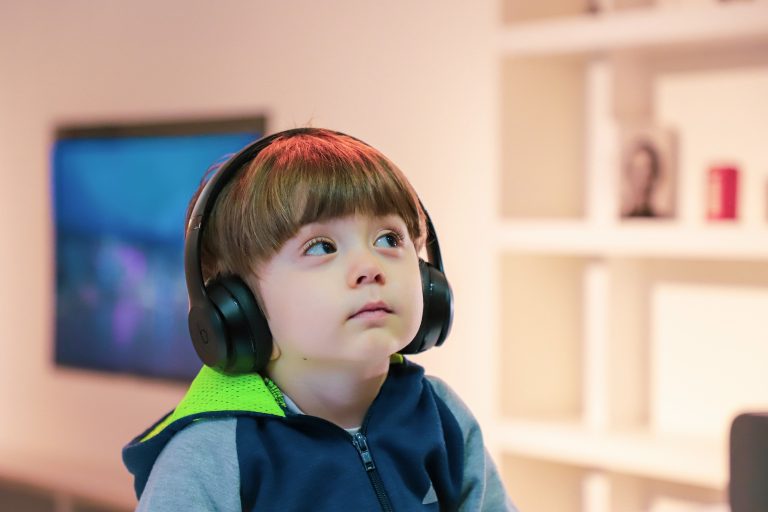Can an Autism Diagnosis Be Removed? If you’re a parent seeing real progress in your child after therapy and support, this question might be on your mind. Autism is a spectrum condition, and every child is different. While the Centers for Disease Control and Prevention (CDC) views autism as a lifelong diagnosis, some children—especially those diagnosed early and who receive intensive support like speech therapy or occupational therapy—show improvements that lead professionals to reevaluate their status. Let’s explore what the latest research tells us, and what it really means if a diagnosis changes.
Understanding Autism Diagnosis at What Age, Male vs Female Differences, and the Adult Diagnostic Process for Women
Autism Spectrum Disorder (ASD) affects how individuals communicate, socialize, and behave. For families and individuals navigating the diagnostic journey, understanding whether an autism diagnosis can change is essential. While autism is typically a lifelong neurodevelopmental condition, new research and assessments sometimes lead professionals to revise a previous diagnosis — especially when considering autism diagnosis at what age, how autism diagnosis male vs female differs, and how the autism diagnosis process for adults plays out, particularly in women.
Can an Autism Diagnosis Be Removed?
The question “Can an autism diagnosis be removed?” arises when behaviors or symptoms change significantly over time, or if a prior evaluation was incomplete. While uncommon, a diagnosis may be revised when developmental progress or more accurate clinical tools reveal a better-fitting explanation.
These changes are made by qualified clinicians, often using standardized diagnostic frameworks like the DSM-5 or ICD-11.
Autism Diagnosis at What Age?
Autism diagnosis at what age varies depending on symptom visibility and developmental markers:
- Early Childhood (Ages 2–5): The most common age for initial diagnosis, when speech and social delays become clear.
- School Age (Ages 6–12): Some children are diagnosed later due to academic or social difficulties.
- Adulthood: Increasingly, adults are being diagnosed after years of unexplained struggles, especially women.
Reasons for Diagnosis Revisions
Revised Clinical Understanding (Ages 2–5)
Some children initially diagnosed with ASD are later found to have other conditions, such as:
- Social Communication Disorder
- Language Delay
- Genetic or neurological conditions
Developmental Progress (Ages 6–12)
Children may show significant improvements that reduce or eliminate core symptoms of autism:
- Improved social communication
- Decreased repetitive behaviors
- Enhanced adaptability
Adult Re-Evaluation
For adults questioning their diagnosis, re-evaluation may focus on:
- Current vs. childhood symptoms
- Differential diagnoses (e.g., ADHD, anxiety)
- The emotional impact of changing one’s diagnostic identity
Autism Diagnosis Male vs Female
A major factor in diagnostic variability is gender. Studies show that females are often misdiagnosed or diagnosed later than males due to:
- Camouflaging behaviors: Girls and women often hide symptoms socially.
- Diagnostic bias: Most tools are based on male presentations.
- Subtle presentation: Less obvious repetitive behaviors or restricted interests.
Autism Diagnosis Process for Adults
The autism diagnosis process for adults involves a nuanced approach:
- Clinical interview: Reviews developmental history.
- Standardized testing: ADOS-2, RAADS-R, or ADI-R adapted for adults.
- Rule-outs: Screen for conditions like anxiety, depression, ADHD.
- Input from family/partners (if available): Offers context and validation.
Autism Diagnosis as an Adult Woman
The autism diagnosis as an adult woman can be especially complex. Many adult women receive diagnoses after years of being mislabeled with:
- Anxiety or depression
- Borderline Personality Disorder
- Social difficulties attributed to other causes
Women often report feeling both relief and grief upon receiving a late diagnosis — relief at finally having clarity, and grief over missed understanding and support.
Outcomes of Reassessment
| Type | Description | Likelihood |
|---|---|---|
| Maintained Diagnosis | Continues to meet full ASD criteria | 70–80% |
| Revised Diagnosis | Better explained by another condition | 10–15% |
| Subclinical Traits | Some traits remain, but no longer meet full criteria | 10–20% |
Barriers and Solutions
Barriers:
- Limited access to specialists
- High cost of assessments
- Emotional attachment to diagnosis
Solutions:
- Seek second opinions from autism specialists
- Compile a thorough developmental history
- Consider neuropsychological testing
While the question “Can an autism diagnosis be removed?” doesn’t have a simple yes or no answer, the journey of every child is different. With early intervention and ongoing support, some children may see significant changes. Still, any decisions about diagnosis should be based on thorough evaluations and expert guidance.
Take the Next Step with Go Behavioral
Whether you’re a parent wondering about your child’s development or an adult seeking clarity, Go Behavioral is here to help.
Call us today at (888) 988-0520 or contact us to schedule a ABA consultation or learn more about our ABA therapy services.
At Go Behavioral, we empower individuals and families through expert care, evidence-based support, and a compassionate approach to lifelong development.
FAQ: Autism Diagnosis Questions
Can an autism diagnosis be removed?
Yes, if updated assessments suggest a more accurate diagnosis or if core symptoms no longer meet clinical criteria. This is rare and should be done by specialists.
Autism diagnosis at what age is most common?
Most diagnoses occur between ages 2–5. However, school-age children and adults, especially women, are increasingly diagnosed later.
Why does autism diagnosis differ in males vs. females?
Females are underdiagnosed due to subtler symptoms and stronger masking behaviors. Diagnostic tools also skew male-focused.
What is the autism diagnosis process for adults?
It includes clinical interviews, standardized assessments like the ADOS-2 or RAADS-R, and differentiation from other conditions like anxiety or ADHD.
How does autism diagnosis as an adult woman differ?
Women are often diagnosed later due to camouflaging, emotional masking, and less overt traits. Many are misdiagnosed with anxiety, depression, or BPD first.
References
- American Psychiatric Association. (2022). Diagnostic and statistical manual of mental disorders (5th ed., text rev.). https://psychiatryonline.org/doi/book/10.1176/appi.books.9780890425787
- Anderson, D. K. (2021). Developmental trajectories in autism spectrum disorders. Journal of Child Psychology and Psychiatry, 62(6), 735-748. https://acamh.onlinelibrary.wiley.com/doi/10.1111/jcpp.13327
- Bargiela, S. (2022). Diagnostic accuracy of adult autism screening tools. Autism Research, 15(3), 412-425.
- https://onlinelibrary.wiley.com/doi/10.1002/aur.2651
- Fein, D.(2013). Optimal outcome in autism spectrum disorders. Journal of Child Psychology and Psychiatry, 54(2), 195-205.
- https://acamh.onlinelibrary.wiley.com/doi/10.1111/jcpp.12037
- Ozonoff, S.(2018). Diagnostic stability in young children at risk for autism. Journal of Autism and Developmental Disorders, 48(11), 3873-3882.
- https://link.springer.com/article/10.1007/s10803-018-3638-2










